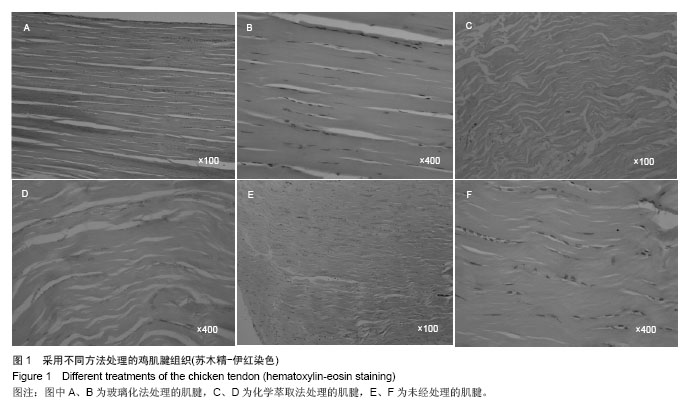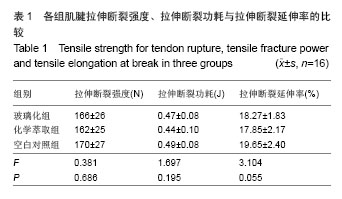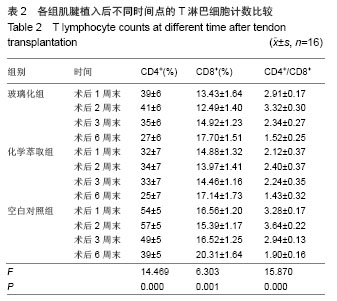中国组织工程研究 ›› 2014, Vol. 18 ›› Issue (39): 6348-6352.doi: 10.3969/j.issn.2095-4344.2014.39.020
• 材料力学及表面改性 material mechanics and surface modification • 上一篇 下一篇
不同方法制备移植修复材料对异体肌腱生物学性能的影响
张红星,刘耿,邱武安
- 西安交通大学附属红会医院手外二科,陕西省西安市 710054
Impact of different preparation methods for graft materials on biological properties of allogeneic tendon
Zhang Hong-xing, Liu Geng, Qiu Wu-an
- Second Department of Hand Surgery, Red-Cross Hospital of Xi’an Jiaotong University, Xi’an 710054, Shaanxi Province, China
摘要:
方法:将48只健康雄性来亨鸡依据随机数字表法分为均分为3组,切取3组鸡一侧第三趾屈趾浅深肌腱,玻璃化组、化学萃取组分别采用玻璃化法与化学萃取法处理肌腱,空白对照组肌腱不做任何处理。取3组一部分肌腱进行生物力学检测;另一部分进行异体移植,移植1,2,3,6周检测外周血CD4+、CD8+T淋巴细胞数。
结果与结论:玻璃化法可保留部分原有肌腱细胞,化学萃取法不能。3组肌腱拉伸断裂强度、拉伸断裂功耗及拉伸断裂延伸率比较差异无显著性意义(P > 0.05)。移植后1,2周末,3组间CD4+、CD8+、CD4+/CD8+比较差异有显著性意义(P < 0.05);移植后3,6周末,玻璃化组、化学萃取组CD4+、CD8+、CD4+/CD8+均明显少于空白对照组(P < 0.05),玻璃化组和化学萃取组间CD4+、CD8+、CD4+/CD8+比较差异无显著性意义(P > 0.05)。表明采用玻璃化法和化学萃取法在有效保留肌腱生物力学性能的基础上,可显著降低肌腱的免疫原性。
中图分类号:



